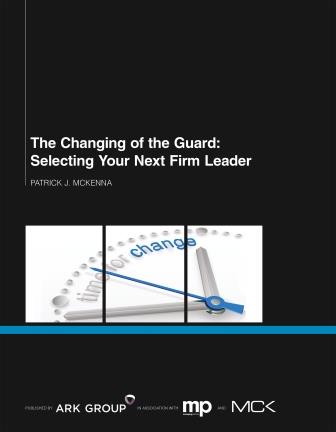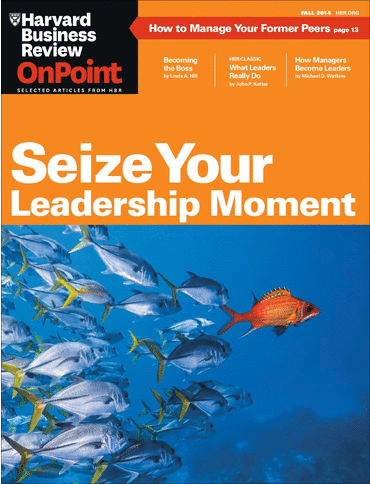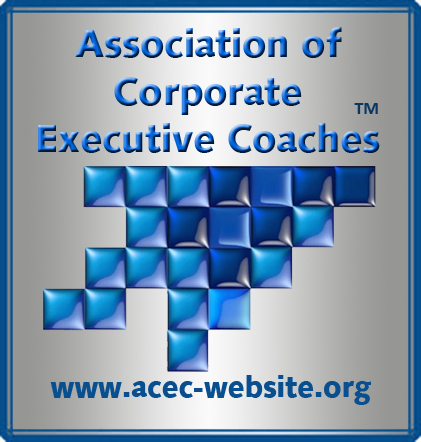http://www.patrickmckenna.com/blog
Page << Prev 20 21 22 23 24 25 26 27 28 29 Next >> of 95
Post #732 – Saturday, May 2,
2015
Signs The U.S. Economy Has
Stalled
 I received this from an
economist friend that points to no less than ten intriguing signs that aren’t noticeable
if you read the mainstream media: I received this from an
economist friend that points to no less than ten intriguing signs that aren’t noticeable
if you read the mainstream media:
• We just
learned that U.S. GDP grew at an anemic 0.2 percent annual rate during the first
quarter of 2015
• If you
strip a very unusual inventory buildup out of the GDP number, U.S. GDP would
have actually fallen at a -2.5 percent annual rate during the first
quarter
• Our
trade deficit with the rest of the planet is absolutely killing our economic
growth. U.S. economic growth would have
been a total of 8 percent higher since the end of the last recession if we
actually had balanced trade with other nations.
• According
to numbers that were just released by the Bureau of Labor Statistics, in one out of every five American families nobody
has a job. So how in the world can the “unemployment rate” be sitting at
“5.5%” when everyone is unemployed in 20% of all families in the United
States?
• The rate of homeownership in the United States has just hit a brand new
25 year low. How can anyone claim that the middle class is
“healthy” when the percentage of Americans that own a home is the lowest that
it has been in more than two decades?
• In 2013, 31 percent of all Americans said that they did
not anticipate buying a home “for the foreseeable future”. Now, that
number has risen to 41 percent.
• The student loan bubble is clearly bursting. According
to Bloomberg, only 37 percent of all student loan
borrowers are actually up to date on their payments and reducing their balances
• Procter
& Gamble has announced that it will be cutting up to 6,000 more jobs from their payroll;
while McDonald’s plans to permanently shut down 700 “poorly performing” restaurants over the
course of 2015. Why would they be doing this if the economy is “getting
better”?
• It is being projected that half of all fracking
companies in the United States will be either “dead or sold” by the end of 2015.
• Retail sales, wholesale sales, factory orders and credit
requests all have declined at a rate not seen since the last recession.
One might conclude that the past few years have been a period of
relative stability for the U.S. economy. A lot of people have been lulled
into a false sense of security during that time. These people have become
convinced that the problems have been fixed. But these signs would
suggest that they haven’t been fixed at all. In fact, these problems are
far worse than they were just prior to the last financial crisis.
Post #731 – April 9, 2015
The Spring 2015 Issue of International Review is Now
Available
International Review is my 24-page glossy, printed
magazine distributed to over 1600 law firm chairs and managing partners
throughout North Am erica. erica.
What happens as a firm
leader when something goes sideways, espcially when it is the result of
something you did . . . or even did not do, that perhaps you should have. Recovering From A Leadership Misstep is another collaboration between me and my good friend
and colleague, Ed Reeser proposing some remedial courses of action for when the
worst that could happen, happens
In
The Leadership Succession Process, I
set out the three fundamentally different approaches to leadership succession,
together with their respective advantages and disadvantages. This article is an excerpt from the
Introduction to my newest work, The Changing of The Guard: Selecting Your
Next Firm Leader. You will find
more information on this NEW instructive guidebook on pages 12 and 13.
Stimulating
Innovation In Your Firm had it’s origins in a Webinar that I was privileged to participate
in with Andrew Smulian, Chairman at Akerman LLP; Ken Grady, CEO of SeyfarthLean;
and John Paris from Williams Mullen’s Innovation Committee - while Inquiring Leaders Want To Know offers
you ten questions to jump-start your strategic thinking. Hopefully both of these offer some pragmatic
advice to those interested in either subject.
Finally, When Job
Descriptions Don’t Do The Job is an article that I hope will provoke you
into taking action on job descriptions for your practice leaders.
As always, I sincerely hope that you find some practical
ideas, tips and techniques here that you can put to use immediately. Please send me your observations, critiques,
comments and suggestions with respect to any of these articles.
Click on the Cover to download
your complimentary PDF copy of the magazine.
Post #730 – March 25, 2015
My Newest Book Is Available For Pre-Order
 Every
firm eventually finds itself in need of a new leader. The executive committee or
board must seek to replace the current incumbent as that individual comes to
the end of their term of office, announces a return to their practice, or
perhaps is contemplating retirement. Every year we also see
firm leaders step down because of a loss of partner confidence, an unexpected
disability, a tempting career offer from a prestigious corporate client, or
even, on occasion, being laterally recruited by a competing firm. While each firm’s situation is unique, the
necessity for determining a succession process that will work is critical. Every
firm eventually finds itself in need of a new leader. The executive committee or
board must seek to replace the current incumbent as that individual comes to
the end of their term of office, announces a return to their practice, or
perhaps is contemplating retirement. Every year we also see
firm leaders step down because of a loss of partner confidence, an unexpected
disability, a tempting career offer from a prestigious corporate client, or
even, on occasion, being laterally recruited by a competing firm. While each firm’s situation is unique, the
necessity for determining a succession process that will work is critical.
The Changing of the Guard: Selecting Your Next Firm Leader is a strategic guide to
effectively managing the leadership succession process. Supported by practical action points, real world
examples, and expert insights, this text is
broken down into 5 distinct parts:
Part One: Making ready
+
Choosing a nominating committee
+
Developing your timeline
+
Identifying the challenges your next leader will face
Part Two: Identifying criteria
+
Develop/refine the job description
+
Identify your selection criteria
+
Identifying specific performance requirements
+
Develop a formal written application form and process
Part Three: Calling for nominations
+
Invite your partners to nominate candidates
+
Host candidate town hall meet and greets
+
Invite confidential input
+
Design and structure a formal interview process for candidates
+
Analyzing a candidate’s strengths
Part Four: Making the decision
+
Reporting on results of interviews and confidential commentary
+
After selecting your new firm leader
Part Five: Managing the role of the outgoing leader
+
Creating a transition/integration plan
The Changing of the Guard also features a series of exclusive interviews
with law firm leaders on their succession planning experiences, these include:
• Stephen J. Immelt, chief executive officer at Hogan Lovells
• Vincent A. Cino, chairman at Jackson Lewis
• Carter G. Phillips, executive committee chair at Sidley Austin
• Timothy E. Powers, managing partner at Haynes and Boone
• Kim Koopersmith, chairman and managing partner at Akin Gump Strauss Hauer &
Feld
Regardless
of your current approach to, or role in the succession planning process, The Changing of the Guard is
critical reading. The
Changing of the Guard: Selecting Your Next Firm Leader will
be available in mid-April. Pre-order your copy
before 5pm April 8th and save $100 making your copy $295 (normally $395)
How To Order: To pre-order your
copy at the discounted rate of $295 simply email Daniel Smallwood at Ark Publishing: dsmallwood@ark-group.com
quoting the ordering code DS-E1 (Orders must be received by 5pm April 8th)
Post #729 –
Wednesday, March 18, 2015
Hedge Funds Are Betting Big on Lawsuits
 According to an article today on Bloomberg Business the lawsuit
finance market is continuing to grow in spite of the US Chamber of Commerce
warnings of wasteful litigation and corruption. According to an article today on Bloomberg Business the lawsuit
finance market is continuing to grow in spite of the US Chamber of Commerce
warnings of wasteful litigation and corruption.
Hedge funds and others speculating on litigation are making more
and larger bets. Some corporate
lobbyists warn that the new financial engineering encourages wasteful courtroom
warfare, but investor demand for fat returns—and big law firms' appetite for
business—guarantee the spread of litigation finance.
Burford Capital,
the largest player in the litigation-finance business, reported that their revenue
rose 35 percent, to $82 million. Burford
has built a $500 million arsenal, and thus far made 32 investments that have
generated $209 million in gross recoveries. Burford mainly finances litigation
initiated by major corporations and handled by big corporate law firms. Among
the well-known law firms that have been involved in Burford-financed cases are
Simpson Thacher & Bartlett, King & Spalding, and Latham &
Watkins. Burford’s CEO is a former
Executive VP and GC of Time Warner.
Meanwhile, Australian-based Bentham IMF
reported funding 10 deals in 2014, including "contract disputes, a
patent-infringement trial, partnership disputes, and five law firm case
portfolios." Bentham says that for
the year it had gross returns of $31 million in the U.S.
The U.S. Chamber of Commerce’s Lisa Rickard (president of the
chamber's Institute for Legal Reform) condemns all of these developments,
alleging that they lead to "more lawsuits, more litigation uncertainty,
higher settlement payoffs to satisfy cash-hungry funders, and in some
instances, even corruption." Others
unabashedly advertise their commitment to financing suits by the "little
guys" against large corporate interests.
This looks to be an area that is going to continue to experience increasing
hedge fund investment attention.
Post #728 – Sunday, March 8, 2015
The Case For Psychometric
Testing of Leadership Candidates
 I’ve been a touch absent from this blog over the past two
months as I’ve been scrambling, between client obligations, to complete the
manuscript for my newest book, tentatively titled: The Changing of The Guard: Selecting Your Next Firm Leader and
expected to be published sometime in April.
The chapters include specific guidance on everything from choosing a
Nominating Committee and identifying your selection criteria; to designing and
structuring a formal interview process and analyzing a candidate’s strengths. And I suspect that it will be this last item
analyzing strengths that will be the most controversial as I reserve no hesitancy
in strongly recommending the use of psychometric testing. Here’s a short excerpt from my manuscript: I’ve been a touch absent from this blog over the past two
months as I’ve been scrambling, between client obligations, to complete the
manuscript for my newest book, tentatively titled: The Changing of The Guard: Selecting Your Next Firm Leader and
expected to be published sometime in April.
The chapters include specific guidance on everything from choosing a
Nominating Committee and identifying your selection criteria; to designing and
structuring a formal interview process and analyzing a candidate’s strengths. And I suspect that it will be this last item
analyzing strengths that will be the most controversial as I reserve no hesitancy
in strongly recommending the use of psychometric testing. Here’s a short excerpt from my manuscript:
So should your one consensus leadership candidate or all of
them undergo psychometric testing?
The vetting process in some firms has become more intense
and my investigations have determined that more firms are beginning to believe
that it is useful. For
example, in the recent selection of one new Firm Chair for an AmLaw 100 firm,
five finalists were shortlisted from an original 11. They were then all then subjected to six hours
of psychometric testing, including a battery of online questions and an
interview with a consultant.
Meanwhile, Mark Rigotti, Chief Executive Officer at Herbert
Smith Freehills reported to me:
We have used testing as
part of the selection of the most senior leaders, via an external
provider. This included two psychometric
tests and in depth interviews intended to identify capabilities, preferences
and potential for the role ahead. As
some one who went through these I found them very helpful in thinking about
first how I would go about my role and secondly about the people needed on the
Executive team to have a diverse balanced set of skills. We also use some tests to assist with
leadership development, rather than selection of leaders. The experience with theses has been
reasonably good with a number of people finding them helpful in working out
what to leverage and what to work to improve their individual
effectiveness. Of course all these tests
and tools don't make decisions or guarantee perfect leaders - they can enable
improvement.
And from Fredrick Lautz the Managing Partner at 450-lawyer
Quarles & Brady, I was told:
During my term as managing partner, we
have had two instances of which I am aware where we used psychometric
testing. Several years back we put a cohort of younger partners who we
thought had leadership potential (roughly 30 attorneys) through a multi-day
leadership training program with coaching follow-up. And then two years
ago, in the course of considering more regular leadership training for our
current and pipeline leaders, we engaged a psychologist to conduct psychometric
testing on a pilot group of current firm leaders, including attorney leaders
and staff leaders. In evaluating the attributes and qualities of our
pipeline leaders and looking at the current stages of their careers (most of
them have fairly long careers ahead of them and are not in a position to give
up their current practices to run the firm), we decided we needed to reshape
our leadership structure to design roles with responsibilities, expectations
and levels of commitment which better fit those who we would expect to succeed
to the leadership roles.
Finally, from William Henderson, Professor of Law at Indiana
University I received an incredulous query –
WHY
is a law firm wating until election to leadership to use psychometric
assessment?
I have a lot of experience
using these types of tools, both as an educator and doing projects for law firms. Their primary value is in lawyer / leadership
development. Firms ought to be
developing their leadership (and their lawyers generally) through psychometric
tools that map onto an overall talent model.
That said, when it comes time to make a selection decision, there is
nothing better than past performance data based on clearly delineated
standards. Apply those standards to past performance data and the promotion
decision becomes both obvious and accurate. Cravath understood this in the
1920s. McKinsey then copied the model in
the 1930s from first-tier law firms. The
short-term focus on revenue generation has obscured this logic. Yet the logic pays enormous long-term dividends.
I firmly believe that if the role of your Nominating
Committee and Board is to assist these candidates in building their
self-awareness to be the best firm leader they can be, it is a very valuable
exercise. Your next firm leader’s self-awareness builds from honest self-appraisal
about emotional strengths and vulnerabilities; values and attitudes,
personality traits and unresolved conflicts.
You best candidate is a total person, not just a set of skills
performing a role.
Post #727 – Monday, February 2, 2015
Three
Little Questions To Stimulate Innovation In Your Firm
 In a recent Webinar I participated in, I was asked, “From your
experience, what one key thing is central to stimulating innovation in
professional service firms?” In a recent Webinar I participated in, I was asked, “From your
experience, what one key thing is central to stimulating innovation in
professional service firms?”
If I had to choose only one thing, and at first blush it may seem
simplistic, it would have to be shaping your firm’s culture to embrace
innovation. And obviously, it has to
start at the top – with the firm’s leadership.
The way I think about culture is that it’s all wrapped up in our
habits (meaning, what behaviors are we prepared to tolerate) and our language
(specifically, how do we use language to shape our collective thinking).
For
example, in an earlier life, I was a Vice-President and Director of a
Canadian-based, public company in the telecommunications industry. I had the good fortune of working with a
rather progressive, very successful CEO who held some very strong beliefs. One of those beliefs, that he preached to all
of his senior team, repeatedly, was that upon first being presented with any
idea or proposed course of action – he would say, “You
have ‘no intellectual integrity’ voicing a personal opinion that suggests that
you know whether it will work or not – because the reality is that you do NOT
know for certain – and even if that same idea has been tried before – say, only
last year – in this firm or some other firm and failed. That still is not determinative of whether
the idea will fail here and now”
He taught us that you only display
intellectual integrity by asking and answering three sequential questions:
#1 NOT:
Will this work? BUT: How do we make this work?
(which you will
notice provokes a whole different mindset).
He believed you start with a focus on “possibility” not “profitability”
#2 What’s the worst that could happen? (let’s be realistic, where might the crap hit
the fan); and finally,
#3 Where is my backdoor if the worst that
could happen, happens?
Unfortunately,
winning the debate,
arguing well, finding the slightest little flaw in the ideas of others is often
the behavior that seems to be held in great esteem within our firms. And allowing that behavior rarely builds
trust or inspires innovation. So to shape
a culture that embraces innovation, I believe starts with the firm leader making
it socially unacceptable to EVER offer an immediate opinion on whether any new
idea will work.
In fact, in a number of the practice
groups that I have worked with, they have, with my encouragement, adopted a
group protocol (a rule for self-governing their collective behavior) that
states: “in our group, we will LOVE every new idea . . . for five minutes!”
___________________________________________________________
Remember to Join Andrew Smulian (Chairman and CEO of Akerman LLP), Ken Grady (CEO of
SeyfarthLean Consulting), John Paris (Chair of Williams Mullen Innovation
Committee) and me for a one-hour Webinar on Stimulating Innovation in Law Firms
– this Thursday February 5th hosted by Ark.
Post #726 –
Saturday, January 17, 2015
Join Our Compensation Think-Tank
 On February 11th, I will be joining old friends Mike
Roster, co-chair of the ACC Value Challenge; Professor Bill Henderson from
Indiana University; writing collaborator
Ed Reeser and numerous others in San Francisco at our “Compensation Think-tank” – a forum for
discussion and debate concerning ways to adapt to the emerging procurement
environment and design reward systems that will attract and retain key lawyers
while also incentivizing them to do more with less and in ways that will accrue
to the benefit of the larger partnership. On February 11th, I will be joining old friends Mike
Roster, co-chair of the ACC Value Challenge; Professor Bill Henderson from
Indiana University; writing collaborator
Ed Reeser and numerous others in San Francisco at our “Compensation Think-tank” – a forum for
discussion and debate concerning ways to adapt to the emerging procurement
environment and design reward systems that will attract and retain key lawyers
while also incentivizing them to do more with less and in ways that will accrue
to the benefit of the larger partnership.
Does the average rank and file partner understand that
the years of ever-escalating compensation have come to an end? How can
firm management address the pressure to deliver on unrealistic
expectations? Of course many see the problem differently - or don't see
the problem at all. No compensation system is perfect. But any
sound compensation system will remove impediments to good management and be
flexible enough to address the current and future strategic needs of the
firm.
How do we make sure that the culture of the firm,
perhaps the single most important component of a thriving organization, is not
only tolerant of change, but in fact complements and is reinforced by it?
For more information on attending a think-tank focused
on aligning compensation systems with current and future business
realities and the goals and objectives of your firm - Compensation [Re]Design For Law Firms.
Post #725 – Monday,
January 5, 2015
Stimulating Innovation In Law Firms
 It is ironic that almost every law firm, somewhere on
their web site, will reference themselves as being an innovative,
entrepreneurial firm. And yet, whether you are dealing with a business
entrepreneur or a law firm partner, upon first hearing about a new idea or
strategy, both will respond with the very same question. "Please tell me
who else is doing this?" It is ironic that almost every law firm, somewhere on
their web site, will reference themselves as being an innovative,
entrepreneurial firm. And yet, whether you are dealing with a business
entrepreneur or a law firm partner, upon first hearing about a new idea or
strategy, both will respond with the very same question. "Please tell me
who else is doing this?"
The question is the same BUT the motivation for asking
is very different. The partner needs to be reassured that some other law firm
out there, that they may have a modicum of respect for, has done this and most
importantly, experienced some success. For the business entrepreneur, the
motivation in asking this question is completely different … they just want to
know because if someone else has already done this, they likely aren't
interested. It's already been done!
The time has come for law firms to create structures
within the firm aimed precisely at innovation - groups whose job it is to solve
difficult problems through creative business processes, a reinterpretation of
the firm's position in the marketplace, new technologies or alternative
staffing models.
Join Andrew Smulian (Chairman and CEO of Akerman LLP),
Ken Grady (CEO of SeyfarthLean Consulting), John Paris (Chair of Williams
Mullen Innovation Committee) and me for a one-hour Webinar – Thursday February 5th hosted by Ark.
More details are available here: http://usa.ark-group.com/events-details.aspx?eid=166
Post #724 – Monday, December 15, 2014
2014 Year-End Review
I’m
often asked about my consulting practice, what kinds of assignments I get
called in on, for what sized firms; what I’m currently researching and writing
about, and just generally how I spend my professional time. As always, at this time of the year, I looked back over my various activities. With
some of these items (like clients served) activity is not a sufficient measure;
results and the client’s satisfaction are really what counts (and to that end,
you can find over 100 client testimonials and endorsements throughout this web
site). But for purposes of looking at where one’s time is invested, here
is what my year looked like:
CLIENTS / FIRMS
SERVED
 •
Geographic Locations: •
Geographic Locations:
86%
U.S. Based
14%
International (Europe & Asia)
•
Nature of Assignments:
36%
developing / implementing strategic plans
45%
governance and leadership issues
7%
client relations and marketing projects
12%
firm leader advisory / coaching
•
Firm Size Range:
36%
firms of over 500 attorneys
14%
firms of 300 to 500 attorneys
43%
firms of 100 to 300 attorneys
7% corporate legal departments
SPEAKING ENGAGEMENTS
•
Participated in presenting at 3 Webinars
Successful
Lateral Hiring (March) – sponsored by LA Daily Journal
Practice
Group Leadership 2.0 (June) – sponsored by Ark
Law
Firm Innovation (July) – sponsored by Ark
•
Participated in 6 Conferences, Workshops & MasterClasses
Panel
Moderator & Presenter – Compensation ThinkTank Conference (January in New
York and September in Chicago)
Facilitator
– Practice Group Leaders Workshop (February in San Francisco, June in New York,
and August in Chicago)
Co-facilitator
– First 100
Days Masterclass (August)
THOUGHT LEADERSHIP
 •
Authored or Contributed to 18 Articles in Publications including: •
Authored or Contributed to 18 Articles in Publications including:
CEO.com
Newsletter
Forbes.com
Harvard
Business Review OnPoint Magazine
Managing
Partner Magazine [UK]
The
Lawyer [UK]
American
Lawyer Magazine
Canadian
Lawyer magazine
AboverTheLaw.com
Of
Counsel – Legal Practice and Management Report
Law.com
•
Two new issues (Spring & Fall) of my INTERNATIONAL REVIEW
24-page glossy magazine were produced and distributed to 1800 firm leaders.
• Began, in mid-March, to
post articles and materials on my LinkedIn site resulting in one of my 17 posts,
specifically on Leadership, generating in excess of 16,200 reads.
OTHER ACHIEVEMENTS
 • I have had my qualifications
approved to be admitted to the Association of Corporate Executive Coaches
(http://acec-website.org) - The center of excellence and the #1 group in the US
for senior level executive / CEO coaches.
I am included on their website under “Experts” with about 50 other CEO
coaches including Dr. Marshall Goldsmith. • I have had my qualifications
approved to be admitted to the Association of Corporate Executive Coaches
(http://acec-website.org) - The center of excellence and the #1 group in the US
for senior level executive / CEO coaches.
I am included on their website under “Experts” with about 50 other CEO
coaches including Dr. Marshall Goldsmith.
•
Appointed as Contributing Editor to Of Counsel: The Legal Practice and Management Report
Of
Counsel is a distinguished management report for law firms and corporate law
departments, helping firm managers solve financial, business, and practice
problems.
•
Appointed to the Advisory Board of True
Balance Longevity Institute Inc.
True Balance is the
Canadian leader in providing Regenerative and Anti-Aging Medicine, Bioidentical Hormone Replacement
Therapy and Medical Aesthetics from five clinics throughout Alberta and British
Columbia.
•
Increased the size of my Linkedin site – Law Firm Leaders – to more than
280 members.
Law
Firm Leaders is the ONLY social networking site exclusively for the chairs and
managing partners of firms of over 100 lawyers in size - with 62% representing
leaders from firms of 100 to 300 lawyers; 16% from firms of 300 to 500 lawyers
and another 19% coming from firms of over 500 attorneys.
 •
Received numerous “UNSOLICITED” LinkedIn Endorsements for my strategic planning
expertise from firm leaders and senior professionals from major firms including
these 20 firms: Allen & Overy (Europe); Baker & McKenzie (Asia); Debevois
& Plimpton; Faegre Baker Daniels; Fasken Martineau (Canada); Foley &
Lardner; Gordon & Rees; Gowlings (Canada); Jackson Lewis; Linklaters
(Europe); Mayer Brown; Miller Canfield; NautaDutilh (Europe); Nelson Mullins; Norton
Rose Fulbright; Shook Hardy & Bacon; Skadden Arps; Thompson & Knight;
and Wyatt Tarrant •
Received numerous “UNSOLICITED” LinkedIn Endorsements for my strategic planning
expertise from firm leaders and senior professionals from major firms including
these 20 firms: Allen & Overy (Europe); Baker & McKenzie (Asia); Debevois
& Plimpton; Faegre Baker Daniels; Fasken Martineau (Canada); Foley &
Lardner; Gordon & Rees; Gowlings (Canada); Jackson Lewis; Linklaters
(Europe); Mayer Brown; Miller Canfield; NautaDutilh (Europe); Nelson Mullins; Norton
Rose Fulbright; Shook Hardy & Bacon; Skadden Arps; Thompson & Knight;
and Wyatt Tarrant
To all of my valued clients, colleagues and friends, I want to say thank you for allowing me to spend time with you; for your confidence, your commitment and your fellowship. I wish you and your families the very best in 2015
Post #723 – Thursday,
December 11, 2014
There Could Be Real Trouble On The Economic Horizon
Once in a while I dabble in
writing about economics, a subject that has always fascinated me. Some readers will remember that back in
August 2008, a time when most pundits were suggesting another possible 18-month
recession, I had the audacity to author a piece entitled, Managing Through A Prolonged
Downturn. In that article, I
stated:
Conventional wisdom, publicly espoused by a number of market watchers
and legal consultants is that: “The recession will be intense, but short. Everyone wants to get back to normal. Short term, the backlog of real estate will be
sold as owners accept losses; banks will end the credit crunch; layoffs will
make companies more efficient.”
My view is far little less confident. I
believe that unlike past experiences, this recession isn’t being caused by a
downward spiral in a few isolated industries. It started with the burst
of a protracted housing bubble and then metastasized into a full-blown credit
crunch, eventually destabilizing the entire financial system. Therefore, I
submit that for the next five years, every time you think it's safe to get
up and dust yourself off from this downturn, every time you feel like you've
endured the worst of it, another piece of news is going to come along to
freshly bludgeon you. This time the economic slowdown is going to be a
lot different and, in many ways, a hell of a lot tougher.
Well, we are now beyond my
five-year prediction and many of my friends are elated with their good fortunes
from the stock market and cheerily optimistic from reading the various
newspaper forecasts for 2015. Many
believe that we are slowly returning to the pre-2008 period we so enjoyed. Let the good times roll!
Today we all watched crude oil moving even LOWER
than the $60 level the Saudi Arabian government claimed was something it could
live with. The price of
crude oil has dropped 40% since June. The Saudi’s are betting they can bankrupt the
U.S. Fracking industry. But that’s not
the real story here.
The first hint of the real story was advanced in a
Bloomberg article on December 2nd entitled: “Junk
Bonds Backing Shale Boom Facing $11.6 Billion Loss.” “The oil sell-off,” Bloomberg reported,
“is deepening concern among bond investors that the least-creditworthy oil
explorers will struggle to pay their obligations and prompt bankers to rein in
credit lines as revenue slumps.”
The
real story is that Energy companies sold $50 billion in junk bonds through
October, 14% of all junk bonds issued. But
junk-rated energy companies trying to raise new money to service old debt or to
fund costly fracking or off-shore drilling operations are suddenly
hitting resistance.
What
does this mean?
Go
back to 2007 and have a look at what the total of subprime and Alt-A loans
amounted to. That number was about a
trillion, and the losses in that sector were above 20%. There you had a $1 trillion market with $200
billion losses. Today, in energy sector
junk bonds, you have a $5 trillion market which, if it experienced the same 20%
loss rate means $1 trillion in losses.
This is far bigger than the subprime crisis that took down the economy
in 2008.
Smaller
drillers are in trouble. All of them had
horrific single-day plunges, some over 30%, on “Black Friday” after OPEC’s
Thanksgiving decision to keep production quotas at 30 million barrels per day. These are the very companies that benefited
during the crazy good times from yield-desperate investors who’d been driven to
obvious insanity by the Fed’s interest rate repression. These investors -- such as, perhaps, your bond
mutual fund or your pension fund -- loaded up on energy junk bonds and
leveraged loans. Ouch!
Companies
in this sector are now facing a harsh reality: crashing revenues and earnings.
Some of them are going to have liquidity problems. Unless a miracle happens that will goose the
price of oil pronto, there will be defaults, and they will reverberate far beyond
the American oil patch.
Meanwhile,
the too-big-to-fail banks are bigger, the risky derivatives bets that tanked the
market are larger, and the Federal Reserve’s money printing is running even
further amok.
Page << Prev 20 21 22 23 24 25 26 27 28 29 Next >> of 95
|


 Ashridge House
Ashridge House  11226 - 60 Street
11226 - 60 Street  Edmonton, Canada
Edmonton, Canada  T5W 3Y8
T5W 3Y8